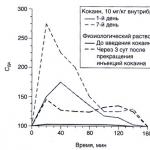Small rodents are often found at home. They are attracted comfortable conditions existence, an inexhaustible source of food. Mice make their way not only into one-story buildings, but also into apartment buildings, where they spread even on high floors. If signs of pests are detected, it is necessary to begin combating them immediately before significant damage is caused.
You can determine that there are rodents in your home based on a number of factors:
- At night you can hear rustling, squeaking, scratching on the floor.
- When inspecting the premises, you can find traces of vital activity: excrement, food remains.
- In rooms with low air circulation, as well as inside furniture, a specific odor is felt.
- If there are baseboards installed along all the walls, the mouse will gnaw through them as it will look for a way to make a hole.
- Wires, furniture, paper products and other items may be damaged.
Catching a mouse is not difficult, however, not a single method will bring results if you do not block the routes of entry into the home. The main reasons for the appearance of rodents:
- Availability of water in free access for mice.
- Food is stored on the table, food remains are left on the floor, in cabinets.
- Garbage long time is in the apartment, emitting a strong odor.
- The house mouse appears through ventilation ducts, holes in the walls, floor, especially if there are significant leaks between the pipe risers and the ceiling.
Methods for catching rodents without a mousetrap
There are many in various ways, allowing you to lure and catch pests. If there is no mousetrap in the house or the residents think this method inhumane, other options can be considered. Among them there are homemade devices and purchased funds.
Sold in tubes. This substance is colorless and odorless, its non-drying composition allows you to use the trap for a long time. There are also ready-made devices on sale - platforms coated on top with an adhesive composition with similar characteristics.
There is a special glue for sale in hardware stores; apply the glue with gloves.
When deciding how to catch a mouse in a house without a mousetrap, use any of two options, however, the main condition must be observed - leave the bait in the center of the trap.

Glue is applied to the cardboard in a thin layer or strips at a distance of 1-1.5 cm from each other, and bait is placed in the center.
Use a jar (0.5 l). A product with adhesive properties (butter, lard, sausage) is left at the bottom. The jar is turned upside down and placed slightly tilted. On one side it needs to be supported with a coin. This is done so that the rodent, attracted by the bait, can climb inside. Then, with the slightest movement, the coin will bounce and the jar will go down. Once caught, the animal will be able to reach the bait, but there will be no turning back.

A 0.5 liter jar will do. A piece of bait (butter, sausage, lard) is glued to the bottom near the wall.
Application plastic bottle
When deciding how to catch a mouse in an apartment without a mousetrap, you can consider various available means. Among them is a plastic bottle. Bait is placed inside - any strong-smelling product. You need to tie a rope/thread/line to the neck. In this way the bottle is hung. It is important to provide rodents with access to the neck. A small pest will slip inside, but, naturally, will not be able to get out.

Bucket trap
There are many implementation options. When considering how to catch a mouse without a mousetrap, you should consider the most popular of them:
- Bait is placed at the bottom of the bucket. To provide access for rodents, it must be placed next to a tall object or a board installed so that the mouse can rise from the floor to the edge of the bucket.
- Place newspaper on top of the container and make a cross-shaped cut in the center. A strong-smelling product is first left at the bottom. When trying to reach the bait, the mouse will fall inside.
- A small plastic bottle is threaded onto a knitting needle. This structure is installed on top of the bucket in a horizontal position. A bait is attached around the outer walls of the bottle or the surfaces are lubricated with a strong-smelling product. The bottle should rotate freely around the knitting needle. When the mouse tries to climb up, it will fall into the bucket.

You just need to put bait inside and place a board so that the mouse can climb in.
Cat vs mice
If there are rodents in your apartment, the likelihood of catching them this way is low. This is explained by the fact that apartment cats do not always react to rodents as if they were prey. Sometimes they are indifferent to mice, in other cases they are afraid of them. Cats living in private homes make excellent mousecatchers, as they often walk outside and encounter rodents.

Adopt a cat from your neighbors. But here it is worth understanding that apartment cats, as a rule, are not mousecatchers.
Glass containers (3 l) are used. Bait is left at the bottom, and a stand for rodents (a stack of books, etc.) is placed nearby. Having climbed up, the mouse is carried away strong odor, will jump for the bait. After this she won't be able to get out.

Video: How to get rid of mice and rats, the best mousetraps
Why are rodents dangerous?
It would seem how much harm small mice can cause. However, being next to them brings many problems. Pests spoil things, wires, and leave traces of vital activity on products. Doesn't appear at home pleasant smell.
If you do not fight rodents, over time there will be more of them, since over the course of a year the increase in the number of the family will increase by 20 mice, which, upon reaching 3 months, begin to multiply and bring in a new generation of pests.
If at night you hear strange scratching sounds behind the wall, and in the morning you find crumbs and husks on the kitchen floor, you can be sure that you have a mouse. An annoying discovery, especially if you found it not at the dacha, but in an apartment on a high floor.
The news will be completely unpleasant for you that these nimble animals breed very actively, easily adapt to any conditions, many of them are not susceptible to poison. In addition, they love to rummage in the dirtiest places and are carriers of infection and dangerous diseases. Therefore, it would be better for you to quickly catch the mouse before the problems increase significantly.
How to understand that there is a mouse living in the house
You will hear it, see it and even feel it. They leave evidence:
- check in kitchen cabinet stocks of flour, cereals and dried fruits. If you store them not in jars, but in bags, the provisions could be damaged by the teeth of a rodent and scatter on the shelf;
- where the mouse ate, it left its excrement to you in gratitude for dinner - small black dry pellets, similar to grains;
- there are more cracks and holes in the house - behind the baseboards, in the walls, in various secluded places;
- an unpleasant mouse smell appears in the cabinet, under the sink and bathtub, if you have a large mouse family living with you for a long time;
- you don't sleep well at night, you hear rustling, squeaking and scratching.
Where did she come from?
The mouse is simply looking for shelter and food; in the city it is easiest for it to get this next to a person. Rodents get into the smallest, inconspicuous holes, climb walls, get inside them, climb into garbage chutes, get out of cracks near water pipes and sewer pipes, live and thrive in ventilation ducts.

It's possible that favorable conditions for it you create yourself. What can attract a mouse:
- crumbs and leftover food;
- cereals in paper and plastic bags;
- trash can without lid;
- no ventilation grilles;
- the cracks near the water supply pipes are not sealed;
- there is access to water;
- a lot of junk that hasn't been sorted out for years.
Basic methods of catching mice
Poison is not the best best method. Because not all of them are deadly. Some are ineffective; mice will eat them with pleasure and without harm to health. If the poison is strong, the animal will die within a couple of hours after trying the treat. When a mouse is poisoned and dies, a disgusting smell will haunt you. Because she will die in the ventilation or in the wall, from where it will be impossible to get her out. The poison is harmful not only to mice, but also to people and pets. Especially if there are small children in the house, categorically avoid this method.
Mousetraps are most often used in everyday life when you need to catch a mouse. They are sold at any hardware store. Small, about the size of a palm, they consist of wooden base and a steel trap. The operating principle is based on luring the rodent with food. As soon as he touches the bait, a deadly mechanism is triggered, slamming the unlucky animal. The animal dies, but sometimes it is only injured, and not everyone wants to watch the suffering of a mouse with a broken spine. Throw away the dead rodent and charge the mousetrap again. Take care of your fingers, they can get pinched.
Glue is also not a very pleasant method. Glue is applied to a piece of cardboard and an attractive-smelling bait is placed in the center. Can be used smoked sausage or seeds soaked in unrefined sunflower oil, mice love this smell. The mouse will go for food and stick. But he can get out and run away, leaving behind traces of glue. If you catch a mouse, throw it away along with the cardboard.

The cat is considered a recognized domestic mouse catcher, but city cats do not know how and do not want to catch rodents. Your pet is most likely too full and lazy for such a troublesome task. Having seen a mouse, he will simply watch it without making any attempt to catch it. Or it may turn out that the cat is no less afraid of mice than you are. Therefore, do not expect that your woolen loafer will be able to catch a mouse in the apartment, rely on your own strength.
Traps are hand-made devices for catching mice. There are those that kill, and there are more humane ones, you can catch a mouse in them and then release it.
DIY traps
We will need very simple materials that are always at hand at home:
- Bucket
- Glass jar
- Plastic bottle
- Drink tin
Let's take a closer look at the methods of creating traps.
Catching mice with a jar
A glass jar with a volume of no more than 800 grams is suitable for this purpose. You need to stick it on one of the walls bread crumb, mashed with sunflower oil, then turn upside down. Place it so that one edge rests on the edge of the coin. The mouse will try to eat the bait and drop the jar, becoming trapped.
Catch with a bucket
A suitable method if there are a lot of mice in the house. You will need a bucket and a knitting needle or a piece of thick wire onto which an empty half-liter plastic bottle will be attached. Thread the knitting needle through the bottle and secure it to the top of the bucket. Don't forget to pour water in a layer about 5 cm high and check that the bottle rotates easily. Grease the side of the bottle with peanut butter or attach a piece of lard. Place the board. The mouse will reach for the bait, slide into the bucket and drown. You will only need to throw out the water along with the dead animal. The advantage of this trap is that it is reusable. You don’t have to change the bait for several days, mice will still be caught.
Oil trick
Pour a spoon into a plastic bottle sunflower oil and shake it so that all the walls are oiled. After this, secure the bottle with an inclination of 45 degrees. You can place a stack of books or a board so that the mouse can quickly reach the entrance to the neck of the bottle. As soon as she, seduced by the smell of oil, slides inside, she will not be able to get back out, her paws will slide. All you have to do is release the caught mouse away from the house.
Making a trap from a plastic bottle
The bottle is tied by the neck with a strong rope, the length of which is approximately 30-40 centimeters, and the other end is secured. A fragrant bait is placed inside. The bottle is placed horizontally on the edge of the table or some other flat surface so that the half with the bait is above the floor. The point of this trap is that the mouse, attracted by the smell, climbs into the bottle and upsets the balance. The bottle falls and hangs in the air, tied to a rope. The mouse will not be able to get out and remains inside.
The easiest way to catch a mouse is with a three-liter jar
Place the jar on the floor, put the bait inside and provide the mouse with access (substitute a twig or books). She will climb in there, but will not be able to get out; the slippery walls and height will not provide such an opportunity.
An interesting method - we fish with a drink can
You drink cola, cut off the bottom of the can, make sharp rays along the edges, bend them inward and throw in a fragrant bait. The mouse slips in there for the fat, but the sharp edges prevent it from getting back out. Throw the jar in the trash.
It is best to place traps in places where rodents visit most often. Mice are nocturnal animals and begin to be active in the late afternoon, so set traps at night and check them in the morning.
Safety precautions when catching mice
Important! Don't forget that mice are pests and carriers of infection! Here are a few simple rules that will allow you to protect yourself:
- do not touch dead mice and their waste products with your bare hands - wear rubber gloves;
- do not allow pets to eat the corpses of mice - this is dangerous for them and can even be fatal;
- Wash your hands thoroughly after disposing of captured mice.
To prevent mice from getting into the house
Take out the trash in a timely manner and it is best to have a garbage can with a lid. Do not leave food out overnight; remove crumbs and leftovers. Cover up silicone glue all the cracks and holes in the floor. The easiest way to deal with any problem is to prevent it from occurring. So that you don’t have to worry about how to catch a mouse, just don’t let it settle in your house.
With the onset of cold weather, small, gray ones appear in houses and apartments, which you want to get rid of in any way. Old proven means - traps - come first. You can buy a ready-made device, or make it yourself. How to catch a mouse in an apartment can rack your brain for days. Or simply take advantage of the experience of other “victims”.
Catching pests with improvised means
When you see a mouse, you shouldn’t immediately rush headlong to the store to buy a trap; first you need to look around. See what you can use as a . There are several ways to catch a mouse in the house without a mousetrap.
Jar
You will need a jar with a capacity of 1-1.5 liters, a coin with a face value of 5 kopecks, a small cardboard, and bait. The simplest version of a mousetrap. Place the bait on the cardboard. Place the jar upside down on top. Place a coin edgewise on one side and place the edge of the jar on it.
The bait should be a little more coins. Catching a mouse in a jar is very simple. At the sight of food, the rodent will rush to get it - there will be no obstacles in this. But when the mouse begins to drag the food with it, touches the coin, the jar drops, and the mouse finds itself in a trap.
The only way the mousetrap might not work is if the animal decides to eat everything at once, and it will crawl back out on its own. To avoid such an event, the trap should be slightly improved.
The bait is glued with tape at a height of 3 cm from the neck. The edge of the can is placed on the side with the bait on the coin. The mouse climbs inside, lifts itself up, leaning on the jar to get to the food. The coin falls and the mouse is trapped.
Note!
You can catch a mouse in the house this way using flower pot, deep bowl, any suitable container. It is better to use smoked sausage, fried lard, and chips as bait.
Plastic bottle
You can catch a mouse in an apartment with a bottle mineral water, any drink. Pour a few tablespoons of vegetable oil onto the bottom and spread on the sides. The bait is laid out in the form of fried seeds. The smell in the bottle will last a long time and spread throughout the room. Catching mice in a bottle is very convenient, since you can catch several of them.
The bottle is placed at an angle. Books work well as a basis. You can lay out 3 books in steps and secure the edge of the bottle with tape. Just in case the trap did not tip over prematurely, the mouse did not escape.
The mouse crawls up the steps into the bottle following the smell of the fragrant bait. It gets inside, readily eats, and the slippery vegetable oil does not allow it to get out. Another poor fellow joins her. If you're lucky, you'll catch 3 at once. You can catch them all one by one.
Note!
The trap is placed near the shelf, on the steps. In such a place mice are caught very quickly. The narrow neck of the bottle is not a hindrance for them.
A glass beer bottle is used for the same purpose. The aroma of brewer's yeast is very attractive to mice. By placing the trap at a slight slope, you can easily catch a mouse without a mousetrap, without killing it, without using additional bait.
Bucket

Catching mice at home with a bucket is the most exciting activity. There are several options for successful traps.
- Line the bucket with newspaper and secure the edges with tape. A cross-shaped cut is made in the center. Sprinkle the bait. In this case, grains, cereals, flour, and seeds are suitable. A stick, a board, and a ruler are placed next to the bucket and will serve as a ladder. The mouse easily climbs the ladder, tries to get to the bait, the newspaper tears, the mouse falls. If you pour water into a bucket, the animal will drown, and you won’t have to worry about what to do with the caught mouse.
- The bucket is filled with water, not reaching 3 cm to the edge. Add a few tablespoons of vegetable oil. Husks, straw, and dry leaves are sprinkled on top so that no water is visible. Scatter grain, seeds, cereals. You can lure it with fragrant bait. They put up a ladder. The trap works in a similar way. But the advantage is that you can catch several pests at once. One victim drowns top layer The trap is quickly restored, followed by another rodent running towards the smell. So, until morning comes, rodent activity will decrease.
- Cut off the bottom and neck of a plastic bottle and lubricate it vegetable oil. The bait is glued to the center with tape. Thread the stick through and place it on the edge of a bucket of water. The animal crawls into the bottle, tries to get to the bait, the bottle spins, falls together with the stick into the bucket.
Another option for a bucket trap if the mouse likes to crawl on tables. Place the ruler on the edge of the table so that most of it hangs down. A bucket is placed under it. Place it on the edge of the ruler. The rodent runs towards the food, unaware of anything, and falls into the bucket. You can kill the mouse yourself or leave it to the cat. Many people simply catch them.
Complex designs
You can catch the mouse yourself using a special trap, the invention of which will take a little effort.
- A house for catching mice is made of mesh. Make an oblong box. The sides are secured with wire. One side will be the door. It should open from top to bottom. Attached with a spring. On opposite side place a hook with bait, it is held on a strong thread, which holds the door at the other end. Smoked sausage, lard, chocolate, and meat are used as bait. A mouse crawls in, tries to pull the bait, the thread breaks, the door closes.
- A box without a top is made from wooden planks. There is a bridge made of small planks. In the center they touch each other, on the other edge they are fixed with hinges. A roof is made separately, which is placed freely on top. Windows are made on both sides so that when a mouse makes its way through the hole, it gets onto the bridge. The bait is hung on the roof in the center. To get to it, the animal must walk along the bridge to the edge. Under the weight of the animal, it tips over and quickly returns to its original position. It is possible to catch all the pests one by one. A living person can be pulled out of the box and fed to the cat.

A house for mice is made from the most different materials. You just have to use your imagination a little and show your carpentry skills - and the trap is ready.
The art of catching without a mousetrap
If the location of the pests is known, you can lure the mouse out with bait with a strong odor. Contrary to popular belief, cheese is not in the first place for rodents. Pests react sharply to smoked meats, nuts, heavily roasted seeds, seasoned crackers, chips, and lard burnt with a match. You can lure them out of their hiding place with the following ingredients.
You can find a mouse in complete silence and twilight. Animals are afraid of loud sounds and cannot tolerate bright light. They get used to the smell of a person in the house, so they are not particularly afraid of it.
To catch a mouse, you should arm yourself with a medium-sized towel. Hide in the corner, quietly wait for the pest to appear from under the closet. Quickly throw on a towel and press.
This option for catching rodents is suitable if you are interested in showing your ingenuity, testing your reaction speed, or if the pest cannot be caught in any other way.
To catch rodents, it is enough to show a little skill, resort to imagination, and figure out where rodents like to hunt.
Often residents of private houses are faced with a situation where wooden house a rodent or a flock starts. They can haunt you for a long time, eating furniture and food supplies. In this case, you need to contact a professional traditional methods. This article will tell you how to catch a mouse in the house without a mousetrap.
Where do rodents come from?
Due to people's lack of awareness about rodents, it will be quite difficult for them to decide how to catch a mouse in a house without a mousetrap. In this case, it is necessary to understand the nature of the appearance of these small and annoying creatures. We need to understand where exactly these harmful creatures came from.

In addition, you need to understand that during the process of fighting rodents, you should be as cruel and cunning as possible. Otherwise, you can allow the development of a pest population.
How to determine their presence in the house
In order to determine whether there really are pests in the house, it is necessary to consider all the main signs of their vital activity:
- All pests emit quite bad and bad smell. If you don’t have even the slightest idea what mice smell like, it’s best to contact the nearest pet salon. Hamsters smell similar to their counterparts;
- Fellow hamsters leave small, round pellets that are very dense. Over time, mice feces become very hard;
- One can suspect the presence of mice only when there are cracks, holes and furniture that has been chewed quite a bit;
- In addition, these critters can have a beneficial effect on preventing you from sleeping at night. The thing is that at night the activity of creatures is developed to the fullest;
- If scraps of newspapers, piles of rags and other debris were found in the cavities of the walls or floors, there are definitely nests of baby mice there;
- If gnawed packages of cereal are found in the pantries, there is a high probability that there are rodents in the house.
Folk ways to get rid of mice
First of all, before deciding how to catch a mouse in a house without a mousetrap, or get rid of rats in sheds and other outbuildings, you need to try to remove them using simple folk methods.
- Everyone has long known that the only good way to control rodents is to have a cat in the house. If you manage to purchase or adopt a cat with hunting inclinations, you don’t have to worry about protecting your home. Skilled predators will be able to forever block the path of nasty pests. In addition, it is highly recommended to have cats, they are the most dangerous for mice;
- A unique fact, but mice cannot vomit. This is why if you feed them poison, they will definitely die. That is why you should place supplies of poison in all corners where mice can crawl out. You also need to keep your pets and children safe. If a pet eats a little rat poison, it will certainly die;
- Calling special services. Exterminators will treat the entire property. But you need to understand that after this you need to leave your home for a couple of days.

Also, among the folk methods, we should highlight things that emit a strong odor. Mice cannot tolerate heavy odors, so they retreat from areas. You should soak cotton wool in vinegar or ammonia and place them in the holes. It is also recommended to hide sheets of paper in the corners bay leaf and mint.
How to catch a mouse without a mousetrap
As stated above, catching a mouse in the house without a mousetrap is quite easy. All advice is generally inclined towards having a fluffy cat in the house. If it is not yet possible to have a predator on a permanent basis, you can ask to “rent” it from neighbors or friends. 
Also, from available ways rodent glue should be considered. It is applied to plywood boards. Due to the fact that the smell of such a product attracts mice, they will be able to stick to this board. Next, you should simply throw this board as far away from your home as possible.
In order to prevent harmful and dangerous rodents from entering your home, you should take care of the safety of your home in advance. Most insulation materials are made from substances that mice cannot digest. It is also recommended to promptly remove any debris from floor surfaces.
You can determine that small rodents have settled in an apartment by several signs:
- rustling or squeaking at night;
- the appearance of gnawed packages of cereals or other products, the remains of husks in the corners of the boxes;
- Mouse droppings are present in the habitats: dry black excrement;
- there are gnawed holes in baseboards or near water pipes;
- After some time, a persistent specific smell appears.
The first desire of the apartment owner will be to get rid of the pests that have settled in, to catch them in any way. However, catching a fast running mouse yourself is not so easy. Although some sites advise people to try their quick response and start catching animals by hand with a towel at the ready.
Damage from rodents
Damage to property is just the beginning. Mice carry many dangerous diseases and infections, such as: bubonic plague, murine typhus, leptospirosis, tularemia and others, thereby causing great harm human health. Therefore, rodent control is primarily a concern for the health and safety of people.
Most people prefer to poison animals. However, this is not the best method of rodent control. Having eaten poison, the mouse can climb into some secluded place and die there. Getting her out of hiding will be problematic and the corpse will begin to emit a stench. And this is another problem that is not so easy to get rid of. And the poison can be very dangerous for both humans and pets.
Therefore, it is better to catch rodents. We will talk further about how to quickly catch a mouse in an apartment without a mousetrap.
But before you fight rodents, you need to address the reasons that attracted them to your home.
- Periodic general cleaning will help to avoid the accumulation of garbage, leftover food in corners, table drawers and other inaccessible places, and therefore rodents will not have the opportunity to profit from anything.
- Products are stored in tightly sealed jars or metal containers with a heavy lid.
- Household and kitchen waste is collected in buckets with lids and removed from the apartment in a timely manner.
- Install grilles on ventilation ducts, seal holes in the floor and baseboards.
The appearance of rodents on the lower floors apartment buildings is not surprising, because basements, which are often not treated, are an ideal breeding ground for rodents. But mice can often be found on the upper floors. Mice entry points include: garbage disposals, cracks under baseboards, cracks near sewer pipes, hanging wires and even walls.
If the owner of the apartment is observant, he will know about the appearance of uninvited guests long before he comes face to face with them. Signs of rodents include: quiet rustling, scratching, and other extraneous sounds that intensify at night.
A detailed inspection of the premises reveals signs of mice in the home. This may include bowel movements, bitten food, pieces of paper, seed husks, and a pronounced mouse odor in insufficiently ventilated areas. Most a clear sign presence of mice in the room is the presence of holes in the baseboards.
Due to people's lack of awareness about rodents, it will be quite difficult for them to decide how to catch a mouse in a house without a mousetrap. In this case, it is necessary to understand the nature of the appearance of these small and annoying creatures. We need to understand where exactly these harmful creatures came from.
- All mice are very attracted to the smell of seeds and nuts. If you see gray skeletons in the yard wandering around the area, get rid of such products;
- Any debris can attract mice and rats in sheds, which will definitely interfere with disposal. In such cases they won’t even help traditional methods if the apartment is littered with garbage. Even if residents live on the top floors, they cannot be sure that uninvited guests will not come to them;
- Mice also easily find themselves in houses that have cracks in the floor or walls. This is why you should beware of any wooden houses and buildings;
- It is necessary to secure as much as possible those places where all the provisions are stored. It is from there that the most alluring and pleasant smell for these creatures comes from.
Capture methods
The most common methods of rodent control are focused on their destruction. Methods that help kill a mouse:
- Ready-made mousetraps, which are sold in a store or on the market, work as follows: with the help of a tasty bait, a pest is lured there, a special mechanism is triggered that kills it.
- Glue traps - enough cruel way. You need to buy special glue and apply it in strips on cardboard or a board. Placed in the center mouse bait, trying to get it, the animal becomes tightly glued. The glued mouse squeaks and squirms violently until it dies from hunger and thirst, which often looks terrible and heartbreaking.
- Another option is a glue house, sold in the store with a sticky layer already applied inside. The mouse gets stuck inside the device, trying to get food, then all that remains is to throw away the house along with it. Mouse glue has an attractive aroma, which helps to catch the rodent.
- The use of poisons and poison for mice It helps kill pests quickly enough, but has some disadvantages. This method cannot be used when pets or small children live in the apartment to avoid poisoning them. Extremely negative consequence It is a fact that the corpses of dead pests in secluded places begin to decompose and emit an unpleasant odor, which is then difficult to get rid of in the apartment.
- Placing a cat or ferret in the house that will catch rodents is also not considered the best option, because modern soft furry pets have completely lost the skills of catching them, and some even allow them to play with themselves or eat from their own bowl.
Therefore, many homeowners prefer to use more humane methods, allowing you to catch a mouse alive in an apartment in a set trap.
There are at least four options for catching pests using improvised means available in almost every home:
- glass jar;
- flower pot;
- plastic bottle;
- a bucket with a capacity of five or more liters.
There are other methods of catching mice at home that require more serious preparation and a trip to the nearest hardware store:
- live traps are a kind of mouse trap, with the only difference being that the mouse will not be harmed; you can make it yourself or purchase a ready-made device;
- special glue for rodents;
- ready-made glue traps;
- rat poison - the disadvantage of this method is the inability to detect a corpse that emits an unpleasant odor;
- a cat or cat - the method is not always reliable: there are pets that themselves try to hide as soon as they see a small mouse.
By the way, the use of adhesive substrates is not suitable for humanists: trying to free itself from a trap, the animal makes heartbreaking sounds that only a person with an impenetrable psyche can withstand.
How to determine their presence in the house
In order to determine whether there really are pests in the house, it is necessary to consider all the main signs of their vital activity:
- All pests emit a rather foul and unpleasant odor. If you don’t have even the slightest idea what mice smell like, it’s best to contact the nearest pet salon. Hamsters smell similar to their counterparts;
- Fellow hamsters leave small, round pellets that are very dense. Over time, mice feces become very hard;
- One can suspect the presence of mice only when there are cracks, holes and furniture that has been chewed quite a bit;
- In addition, these critters can have a beneficial effect on preventing you from sleeping at night. The thing is that at night the activity of creatures is developed to the fullest;
- If scraps of newspapers, piles of rags and other debris were found in the cavities of the walls or floors, there are definitely nests of baby mice there;
- If gnawed packages of cereal are found in the pantries, there is a high probability that there are rodents in the house.


















